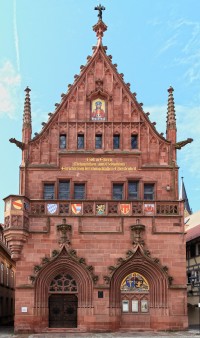Vorderseite: Luther, Melanchthon und Kurfürst Johann von Sachsen, deren Brustbilder nach rechts
Umschrift: MARTIN LUTHER - JOHN OF SAXONY – PH. MELANCHTHON /JUNE 25 th 1530; dazwischen ihre Wappenschilder
Rückseite: Darstellung der Übergabe der Augsburger Konfession an Kaiser Karl V., im Abschnitt: 1930
Umschrift: AMERICAN LUTHERAN QUADRICENTENNIAL OF THE AUGSBURG CONFESSION
Martin Luther (1483 – 1546), Philipp Melanchthon (1497 – 1560), Kurfürst Johann von Sachsen, der Beständige (1468 - 1532)
en

